Affiliate links on Android Authority may earn us a commission. Learn more.
Which smartphones retain their resale value the best?
December 13, 2017
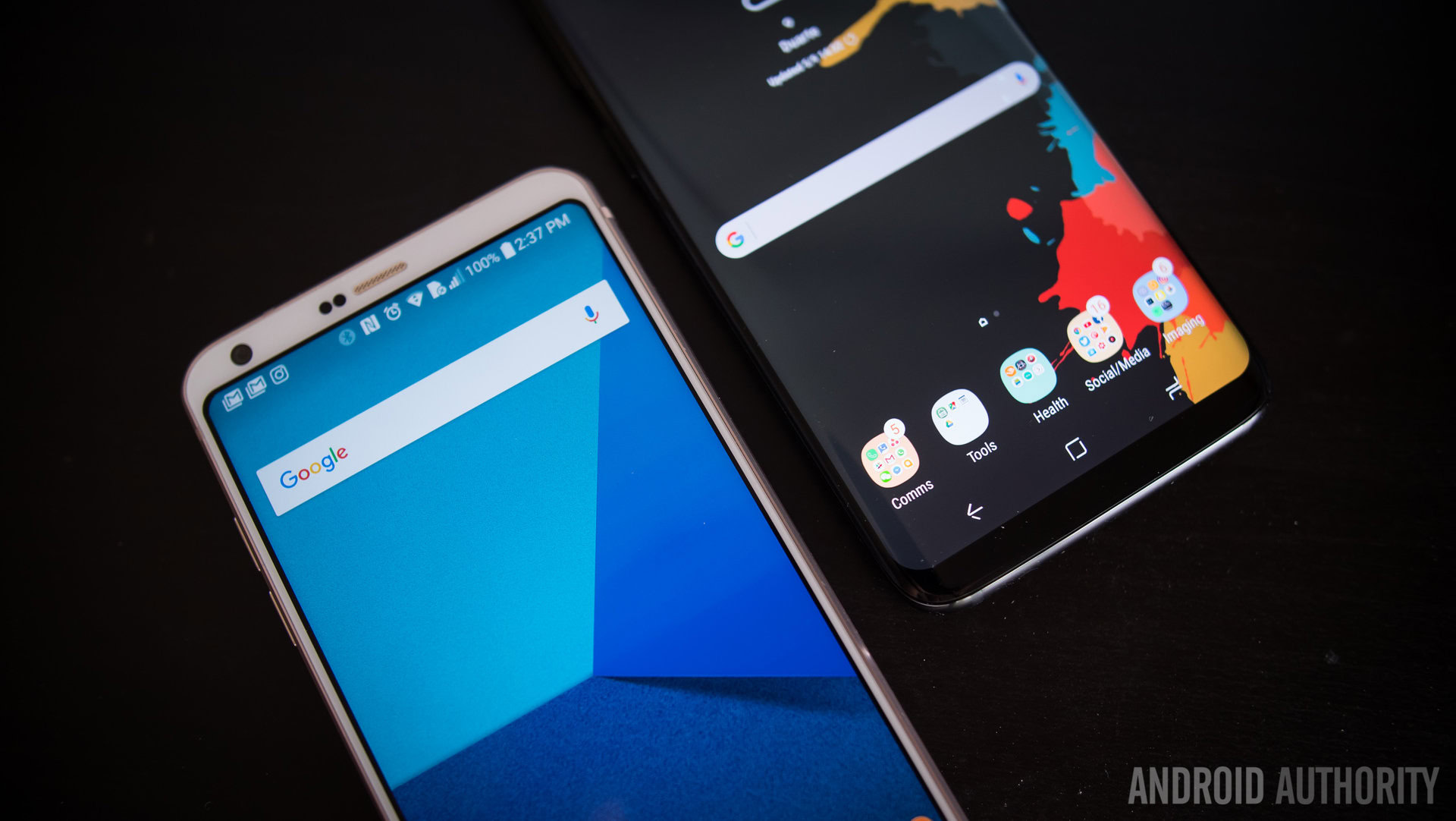
Keeping up in the mobile market can be a costly endeavor. Whether you’re keen to keep up to date with the latest and greatest in smartphone technology, or simply like to update your phone every year, selling your old phone can make all the difference. However, due to the fast rate of change in mobile technology and wide range of handset released every year, smartphone prices typically fall shortly after they launch. This can limit what you’re able to get for your old handsets, which makes picking up a flagship which retains retail value very important. But which phones keep their value best?
Don’t miss: Here are the 2016 smartphones that retain their resale value the best
We’re not necessarily looking for the cheapest selling prices or used prices on second hand sites. Instead we’re looking at the typical selling prices for the smallest memory models from Amazon or other major retailers, to give an idea of general market value rather than used prices. Most of the historic price data we use comes from camelcamelcamel.com.
Let’s take a look at how this year’s early and major releases performed during their first three months on the market. This gives us a balanced look at how the brands stack up side by side, even if their actual launch dates were spread apart a little. For this we’re going to look at Samsung’s two Galaxy S8 models, the LG G6, HTC U11, and the Sony Xperia XZ Premium.
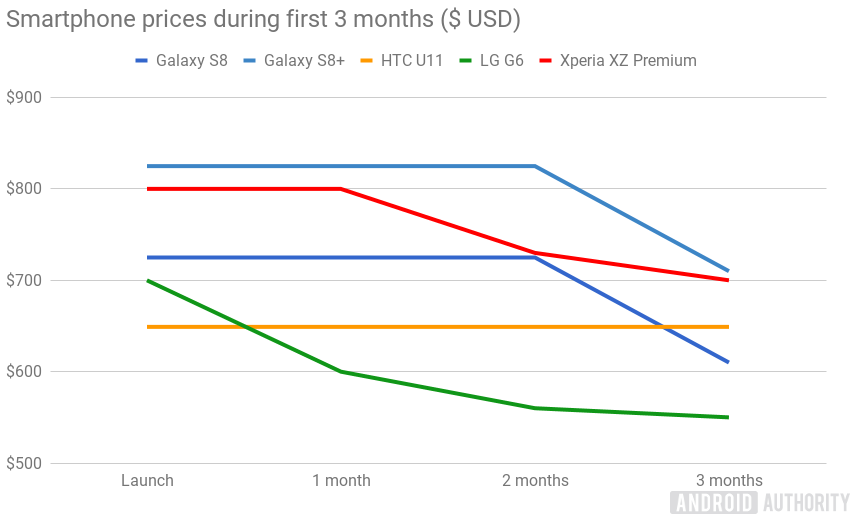
Based on price alone, the HTCU11 has actually retained its retail value the best. It’s still selling for the same $649 launch price over at Amazon. Perhaps this lower entry point than previous models— the HTC 10 launched at $700— held back the price slump that the brand has seen before. Samsung’s Galaxy S8 and S8 Plus hold up incredibly well for two months before prices start dropping. Samsung’s flagships didn’t squeeze together in price either, unlike last year. The use of the same edge display design this time around is probably leaving consumers to pick between display sizes rather than design.
As we’ve come to expect, the LG G6’s price fell fastest out of the the year’s early flagships, knocking off up to $100 after just a month on the market, though it retained a higher selling point than the G5 over the G5’s first three months. To get a better look at how the brands perform against one another, let’s look at percentage changes in price.
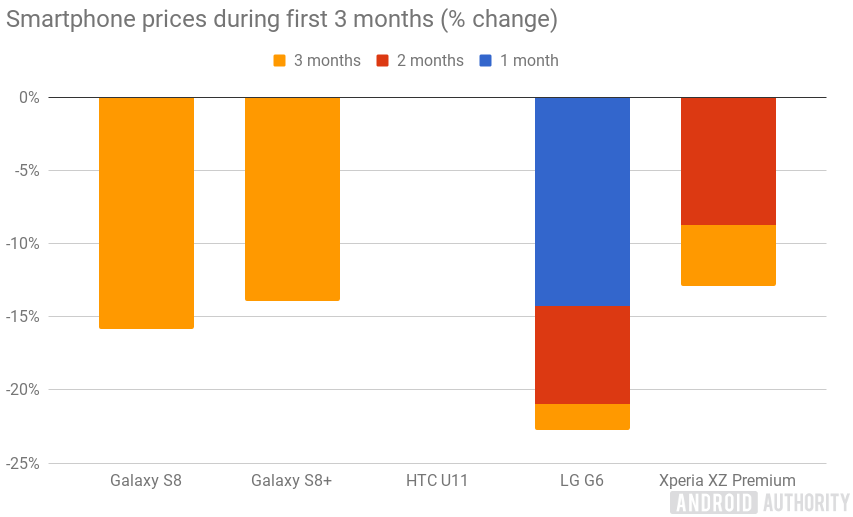
The Galaxy S8 Plus held up a little better than the regular S8, though both ended up roughly 15 percent lower after their first three months, which really isn’t bad. By comparison, the LG G6 lost roughly the same value in its first month, dropping its price 21 percent after two months, settling down in its third month. The Xperia XZ Premium actually held up better than Samsung’s flagships for the first three months, perhaps due to its limited availability in the US. However, at today’s prices Sony’s latest flagship has actually seen one of the biggest percentage falls.
The G6 has, perhaps surprisingly, seen its price stabilize following the initial drop, barring the odd sale or cheap international import. The handset has maintained its value almost as well as the Galaxy S8. The HUAWEI P10 Plus has seen a similar drop to the G6, with a notable drop in the first month followed by a gradual stabilization.
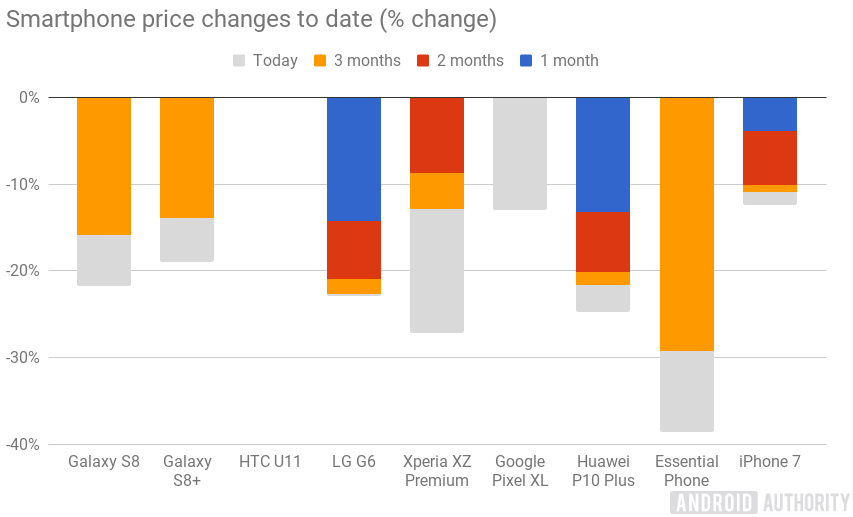
The biggest loser I’ve spotted this year is the Essential Phone. Despite holding completely unchanged for the first two months on shelves, the third month saw a big drop, from $700 to $500. It’s since settled at $450, almost a 40 percent in just over three months (if you include time spent in pre-order). The first generation Google Pixel couldn’t be more different. Google’s firm grip on retail channels, availability, and a reluctance to discount the price for any promotions kept the value high for its entire year on the market. A meaningful reduction has only just happened, following the launch of the Google Pixel 2.
Last year, a 25- to 30-percent drop was rather typical after five months or more on the market, so many of 2017’s flagships appear to have fared better. This could be due to new form factors, with more distinctive thin-bezel designs offering a notable break with last year’s phones and leading to higher demand. For comparison, phones in the last twelve months tend to have only seen values fall between 20 and 25 percent.
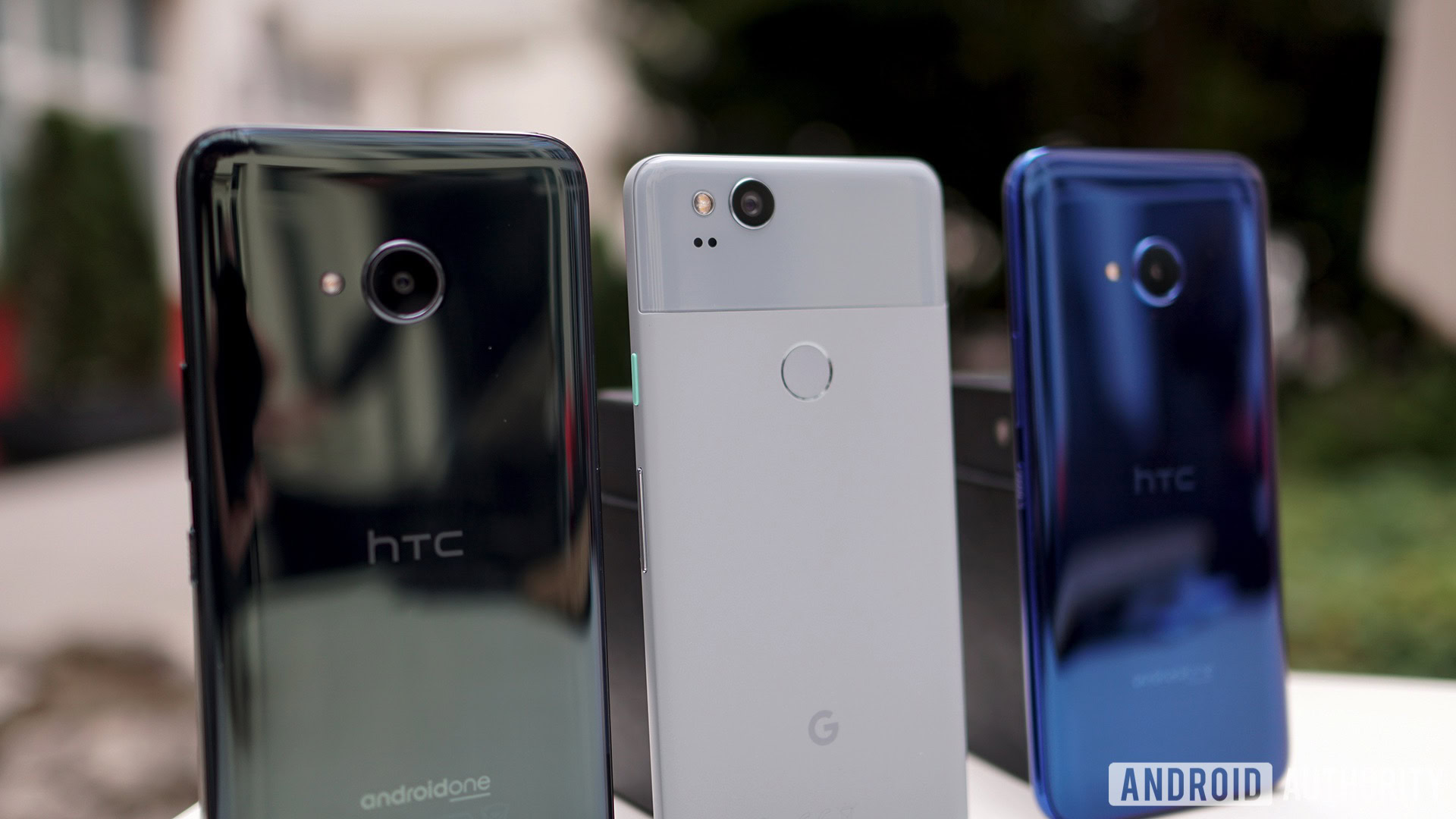
So what are the key takeaways?
Grabbing a phone from a highly recognizable brand is still pretty important. Apple’s iPhone and Samsung’s Galaxy handsets consistently retain their value well after launch and don’t see much movement until their third month on the market. This is certainly due brand awareness and market share, which results in a large pool of consumers competing to pick up handsets whenever the price dips slightly. High demand helps retailers and secondhand sellers keep prices high.
Lesser known brands, such as HUAWEI and Sony in the US, don’t hold up as well long term. Although small scale launch and import phones may stay higher for a little while, when availability is limited, consumer interest and demand drops off more quickly, resulting in fewer resale opportunities.There are a few exceptions to these rules. Google’s Pixel range held up its value much better than most, although we’ll have to see if the same applies for the Pixel 2 series given its shaky start. LG seems to decline quickest, but also offers a more stable long term price. Picking up an LG phone during launch month, or even month after, isn’t necessarily the best deal. Afterwards its value barely changes, which makes it a good option for maximizing longterm resale value.
Overall, sticking with the biggest brands and most popular releases seems like the best bet for retaining value if you’re looking to sell a little down the road.
If you have any of your own reselling tips and tricks, share them in the comments!